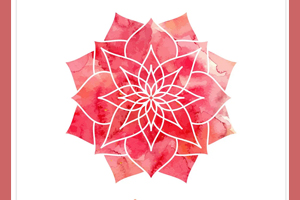Author: Setareh Kiumarsi
Ayurvedic Breakfast
What should I eat for breakfast? When should I eat and how much?
If you’re not hungry in the morning, read here.
And if you’re hungry in the morning, read here.
Alongside your breakfast, instead of caffeinated drinks (like coffee or black tea), drink a cup of digestive or energizing herbal tea to both wake you up and support your digestion. By the way, why shouldn’t we consume caffeine? What’s life like without caffeine? How can we eliminate caffeine from our lives? Read the answers to these questions here.
Morning Snack
Fruit salad is an Ayurvedic snack
Two hours after breakfast, drink a glass of digestive tea every hour. If you don’t have access to digestive tea, drink a glass of warm water with a few drops of lemon juice, a slightly heaped teaspoon of honey, and a pinch of salt every hour. This will stoke your digestive fire and aid your digestion.
Around 10 AM, pay attention to your hunger. If you’re hungry, have a healthy snack such as the following:
A bowl of fruit salad or one or two pieces of fruit (e.g., a persimmon with a sweet lemon) with a bowl of cooked apple
Ojas Drink
10 soaked and peeled almonds + 1 teaspoon honey + a pinch of cardamom + a pinch of rose petals + a cup of digestive tea
Avoid eating cakes and biscuits as your morning snack.
If you’re not hungry, it’s better not to eat anything and instead drink a cup of digestive tea or warm water with a few drops of lemon and honey.
Ayurvedic Lunch
Remember that in Ayurveda, lunch is considered the main meal of the day. Just as the sun is at its peak in the sky between 11 AM and 1 PM, our digestive fire is also at its strongest and ready to digest the main meal of the day. So make sure to eat lunch between 11 and 1 (no later than 2). After 2 PM, digestive fire weakens and digesting a heavy meal becomes very difficult for the digestive system.
Now think about your typical lunch plate. Usually 15–20 spoonfuls of rice with a large piece of meat, chicken, or fish. Alongside it, a few spoons of yogurt and a piece of bread to feel full. Immediately after eating, you might also have a dessert thinking it helps digestion.
The ingredients and proportions of the foods mentioned above make lunch very heavy and hard to digest. Try to follow the rules below for better digestion and absorption of your main meal:
Do’s at Lunch Time
About 30% of your plate should be rice (max. 4–5 tablespoons) or bread (max. the size of your palm). Eat rice strained and seasoned. If using bread, opt for whole grain, multi-grain, or gluten-free bread. If you’re very thin and wish to gain weight, increase the rice to 7–8 tablespoons and cook it as soft, seasoned rice.
About 20% of your plate should be protein (about half your palm). For example, one-third of a chicken breast or 2–3 small pieces of meat. If you’re vegetarian, this 20% could be a vegetable stew containing a small piece of cheese, or 2 tablespoons of yogurt, or 10 soaked and peeled almonds (or pistachios).
About 50% of your plate should be fiber-rich foods like digestive salad or fresh herbs (like parsley and basil) or sautéed/steamed vegetables. If using fresh herbs, season them with some lemon juice, olive oil, salt, and thyme. If using cooked vegetables, maintain the correct balance between warm and cold vegetables. If you are very thin and looking to gain weight, reduce the vegetables to 30%.
Don’ts at Lunch Time
Don’t overeat. Place your two palms together to form a bowl—this is the volume of your stomach. So all foods in your lunch (main dish, salad, sides) should fit on a regular plate. Learn proper eating habits: eat slowly, use a teaspoon instead of a tablespoon, and chew each bite thoroughly before swallowing.
Don’t combine rice, bread, and potatoes in one meal, this combination is very heavy and difficult to digest.
If your food contains meat, chicken, fish, or eggs, do not eat yogurt or cheese with it. Also avoid dishes that contain milk or cream. Dairy is very sticky and phlegm-inducing, and its combination with any kind of meat is very toxic and hard to digest.
Avoid drinking ice water, soda, and cold, salty, thick yogurt drinks with your food. Remember that regular yogurt drinks with food harm digestion, but digestive lassi acts like digestive nectar and aids digestion.
Avoid heavy, sugary desserts after your meal. For the right time and manner to eat desserts, read here. If you feel like eating something sweet after your meal, pour 1–2 teaspoons of honey over 5–10 soaked and peeled almonds, add 2 pinches of cardamom and 1 pinch of rose petals, and enjoy.
Ayurvedic Afternoon Snack
Suppose you had lunch around 12 to 1 PM. If around 4 to 5 PM you feel hungry, eat one of the following snacks:
– A whole-grain biscuit or cake slice with a cup of digestive tea
– A bowl of fruit salad or one or two fruits (e.g., a persimmon or tangerine with a sweet lemon) or a bowl of cooked apple
– Or 10 soaked and peeled almonds + 1 teaspoon honey + a pinch of cardamom + a pinch of rose petals + a cup of digestive tea
If you don’t feel hungry, eat one of the following anti-phlegm snacks:
– A glass of carrot juice
– A glass of vegetable smoothie
– One grated carrot + 2 pinches of cardamom + 1 pinch of rose petals + 1–2 teaspoons of honey
– A bowl of cooked apple
Ayurvedic Dinner
Follow these two important rules at dinner:
1 – Eat dinner around 6 PM (latest by 7). Why?
When you eat dinner late and sleep right after, your body lies flat, digestion is disrupted (for more on the harm of sleeping right after eating, click here), and your digestive tract fills with bad phlegm and toxins.
2 – Include fiber-rich vegetables (like carrot, spinach, parsley, basil, leek, bell pepper, celery, beet, etc.) in your dinner. Reduce carbohydrates and increase vegetables. Why? Because the fiber in vegetables absorbs undigested phlegm accumulated in your digestive tract during the day and digests it.
What to Eat for Dinner?
Eat one of the following combinations:
Make a bowl of digestive salad. If you’re vegetarian, add some nuts (e.g., 10 soaked and peeled almonds or 10 pistachios or 1 tablespoon of pumpkin or sunflower seeds) and 2 tablespoons of cooked quinoa. If not vegetarian, add some animal protein (like chicken, turkey, a boiled egg, etc.). Eat this salad with a glass of digestive lassi.
This combination is very suitable for those who are overweight or have an imbalance of the Kapha dosha. If you’re thin or have a dominant Vata dosha, you can eat a piece of whole grain or gluten-free bread with your salad.
A bowl of vegetable soup or vegetable stew. Try to make 50–70% of the soup/stew vegetables (with a warm-to-cold vegetable ratio of 3:1—for more info on warm and cold vegetables click here). The remaining 30–50% should be protein and a light grain (like quinoa, oats, buckwheat, bulgur, or rice).
Around 7 PM, drink a cup of calming herbal tea.
If you had an early dinner and feel hungry before bed, drink a cup of warm spiced milk with honey (heat 1 cup of milk with 2 pinches of cardamom, 1 pinch of nutmeg, and 1 pinch of rose petals, then add 1 teaspoon of honey before drinking).
If you’re not hungry before bed, drink a cup of digestive lassi… this drink aids digestion and helps you sleep deeply.
Please be sure to credit the author, Setareh Kiumarsi, when sharing or republishing this article, which was written with love and the hope of well-being for all.






